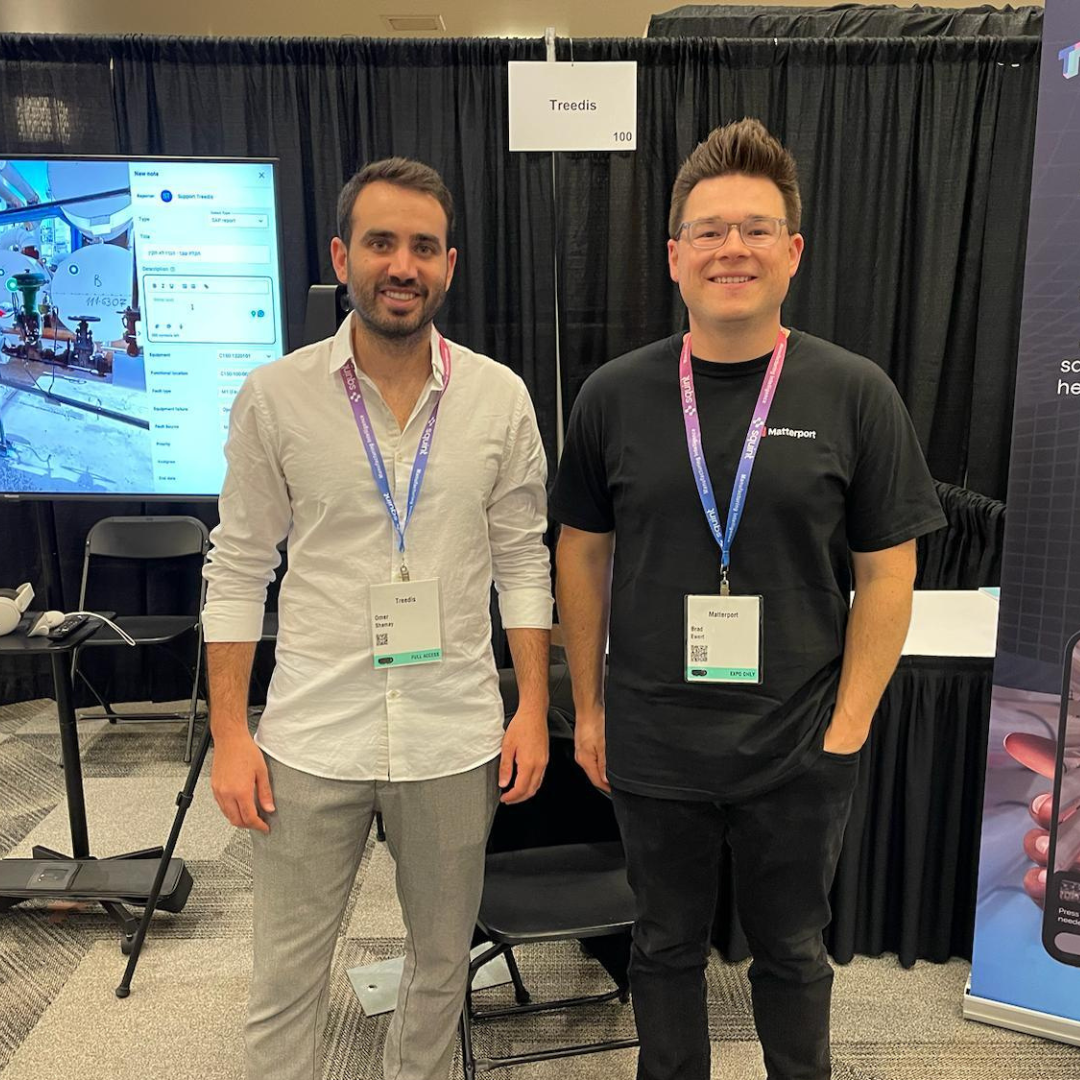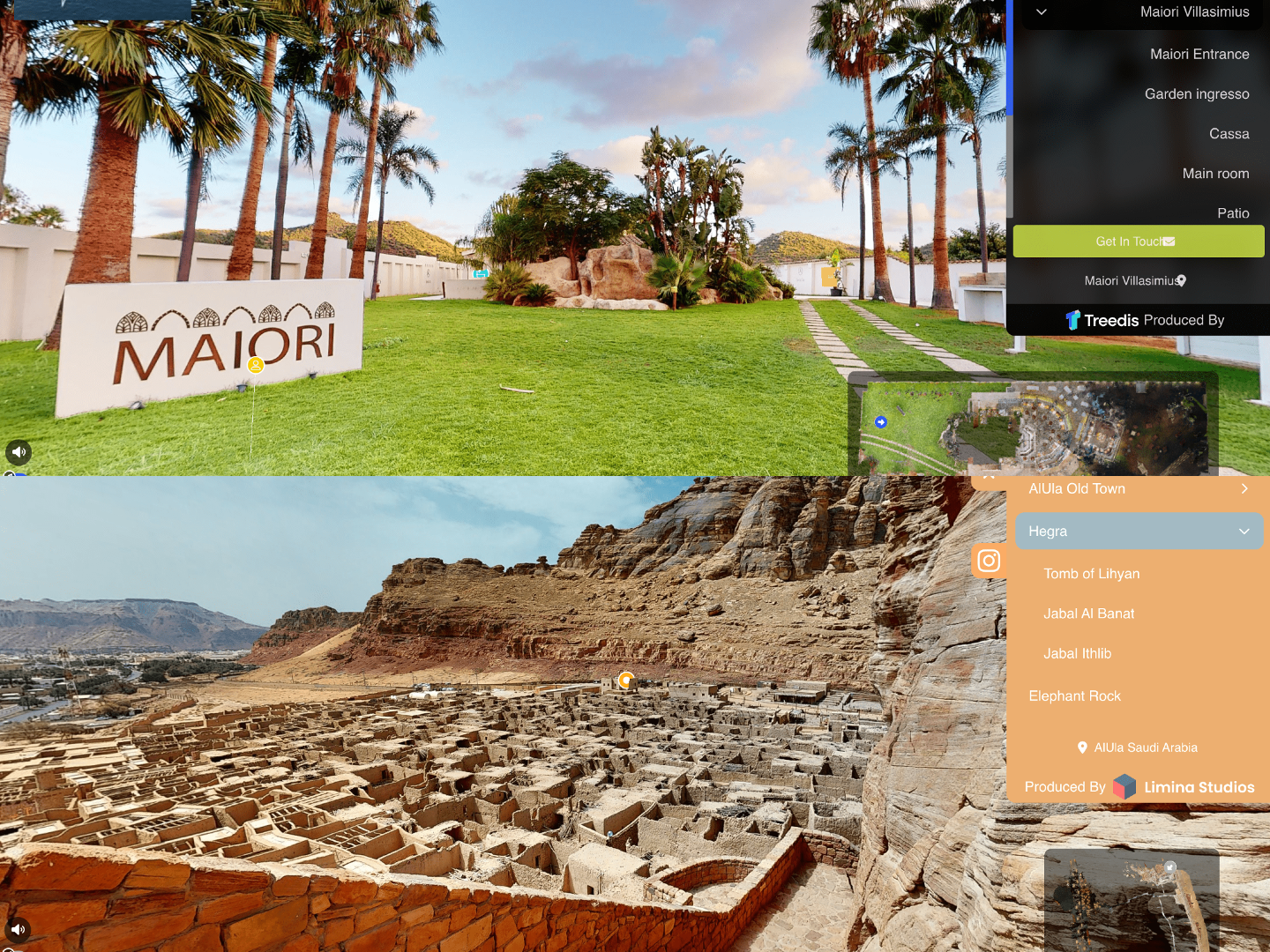Blog
AR or VR: Choosing the Right Immersive Technology for Your Business
.png)

Welcome to the immersive world of augmented and virtual reality, where digital experiences blend seamlessly with the physical world!
As businesses increasingly seek to embrace immersive technologies, it becomes essential to understand the differences between AR and VR and identify the best fit for your company.
Throughout this blog post, we will delve into the world of AR and VR, exploring their unique attributes, benefits, and applications. We will also navigate the decision-making process, helping you identify the best fit for your company's goals. Last but not least, we will introduce you to Treedis, the game-changing platform that bridges the gap between AR and VR, providing you with a unified solution for bringing your immersive vision to life.
I. Understanding Augmented Reality (AR)
A. Definition and explanation of AR
Augmented Reality (AR) is an innovative technology that enriches our perception of reality by overlaying digital elements onto the physical world. It seamlessly integrates virtual content, such as images, videos, or 3D models, into our real-time environment, enhancing our sensory experience. AR achieves this by leveraging computer vision, sensors, and GPS technologies to precisely anchor virtual objects to their real-world counterparts.
AR experiences can be accessed through various devices, with smartphones being the most accessible. By using the camera and sensors of a smartphone, AR apps can superimpose digital content onto the live camera feed, allowing users to interact with virtual objects as if they were physically present in the real world. Additionally, smart glasses, such as those developed by companies like Microsoft and Google, provide a more hands-free and immersive AR experience by projecting digital content directly onto the user's field of view.
B. Benefits and applications of AR in various industries
The applications of AR are vast and span across numerous industries. One of the key benefits of AR is its ability to enhance user experiences by providing interactive and engaging content.
In the retail industry, AR is used to create virtual try-on experiences, allowing customers to visualise products before making a purchase.
AR also finds applications in education, where it brings static subjects to life, enabling interactive learning experiences.
AR is revolutionising the field of architecture and design by allowing professionals to visualise and present their designs in real-world contexts.
AR is also widely used in manufacturing and maintenance, where it provides real-time information and guidance to workers, improving efficiency and reducing errors.
II. Delving into Virtual Reality (VR)
A. Definition and explanation of VR
Virtual Reality (VR) is a transformative technology that immerses users in simulated environments, transporting them to virtual worlds and providing a sense of presence and interaction. VR achieves this by utilising specialised headsets that completely cover the user's field of view and often include motion tracking capabilities. By wearing VR headsets, users are visually and audibly immersed in computer-generated environments that can range from realistic to fantastical.
B. Advantages and applications of VR in Various Industries
VR offers significant advantages in several fields.
In training and simulations, VR provides realistic and safe environments for practising complex tasks or scenarios. It enables trainees to develop skills in a controlled setting without real-world consequences.
VR is also widely used in entertainment, offering immersive gaming experiences, interactive storytelling, and virtual tours of places around the world.
Additionally, VR finds applications in healthcare for pain management, exposure therapy, and surgical training.
III. Comparing AR and VR - Finding the Right Fit
A. Distinct characteristics and strengths of AR and VR
AR and VR have distinct characteristics that make them suitable for different purposes. AR enhances the real world by overlaying digital information, while VR creates entirely virtual environments. AR is more suitable for contextual information, real-time interactions, and overlaying digital content onto the physical world. VR, on the other hand, provides complete immersion, allowing users to escape reality and explore virtual environments in a highly immersive manner.
B. Factors to consider when choosing between AR and VR
When deciding between AR and VR for business applications, several factors should be considered. User engagement is crucial, as both technologies offer unique ways to captivate and interact with users. Understanding the target audience's preferences and demographics is essential, as some may be more receptive to AR experiences, while others may prefer the immersive nature of VR. The industry applicability should also be assessed, as certain sectors may benefit more from AR's overlay of digital information, while others may require the complete immersion offered by VR.
C. Treedis, the advantage of a unified solution
While businesses often face the challenge of choosing between AR and VR, a unified solution can provide the best of both worlds. Treedis, as a leading platform, offers a comprehensive solution that seamlessly integrates both AR and VR experiences. With Treedis, businesses can create captivating and immersive digital twin experiences that combine the overlay of AR with the complete immersion of VR. By embracing Treedis, businesses can leverage the benefits of both technologies without compromising on either, opening doors to endless possibilities for customer engagement, training, marketing, and more.
IV. The Treedis Advantage - Embrace Immersive Realities with Ease
Treedis understands the challenges businesses face when integrating immersive technologies into their workflows. That's why we have developed a groundbreaking solution that simplifies the process and allows you to seamlessly embrace the power of augmented reality (AR) and virtual reality (VR) within a single platform.
Imagine being able to effortlessly explore your digital twin in three dimensions—digital, virtual reality, and now, augmented reality. By simply scanning your digital twin, you can step into a world where the virtual seamlessly blends with the real, giving you a comprehensive understanding of your space like never before.
With our AR app, you can unlock the full potential of your digital twins by viewing enhanced versions within their physical counterparts, enabling you to visualise changes and modifications in real time. Our AR technology takes you beyond the boundaries of traditional viewing experiences, allowing you to navigate indoors and interact with each staged element.
Furthermore, any changes made to your digital twin are instantly visible in VR, as all of our features are fully compatible with a wide range of virtual reality glasses and equipment.
This real-time synchronisation enhances productivity, streamlines workflows, and encourages efficient collaboration among team members.
With Treedis, you can bring your immersive vision to life with ease. Our platform's ability to seamlessly integrate AR and VR experiences enables you to leverage the strengths of both technologies, maximising the impact of your immersive projects. Whether you're aiming to captivate customers, streamline training programs, or revolutionise product visualisation, Treedis provides a one-stop solution that empowers you to create compelling immersive experiences without extensive coding or technical expertise.
Conclusion:
As you embark on your journey into immersive realities, the choice between AR and VR becomes crucial. However, with Treedis, you don't have to choose one over the other. Seamlessly integrate AR and VR into your business strategy using the power of digital twins. With Treedis, you can unlock the best of both worlds and bring your company into the forefront of the immersive revolution.
Join the ranks of over 5,000 satisfied clients, including industry-leading corporations such as Skoda, Havells, Optical Center, Coca Cola, and Dow Jones, who have leveraged Treedis to unlock the potential of the hybrid realities,
With Treedis, you can confidently navigate the ever-evolving landscape of immersive realities and bring your company's vision to life.
More Articles
More Articles



Jan 14, 2025
How Immersive Technologies Are Revolutionizing Workforce Training and Closing the Skills Gap
Immersive technologies like AR, VR, and digital twins are revolutionizing workforce training by addressing the growing skills gap with engaging, hands-on learning experiences. These solutions enhance retention, boost productivity, and reduce costs, making them essential for dynamic, scalable training in a rapidly evolving job market.


Nov 27, 2024
What's Next For Training? Takeaways From The Augmented Enterprise Summit
In October, we joined the Augmented Enterprise Summit (AES) with Matterport, connecting with industry leaders and Fortune 500 companies while sharing key XR insights.


Jun 28, 2024
Digital Twin Awards: Success Stories
The Digital Twin Awards honor virtual tour innovation. This year, Treedis users Farhad Berahman from Limina Studios and Francesco Loddo from SardiniaVirtualTours3D won in historical and hospitality categories. Farhad's tour of AlUla captivated 2 million viewers, while Francesco's tour of Maiori Villasimius boosted bookings by 25%. Their achievements showcase the transformative power of Treedis technology.
%20(1).jpg)

Jun 5, 2024
Key Insights from Hannover Messe: The Future of Manufacturing in Industry 4.0
At the 2024 Hannover Messe, Treedis showcased its Connected Workers solution with AWS, Vodafone Business, and Matterport, integrating digital twins and live sensor data to enhance manufacturing efficiency. This collaboration highlighted the importance of strategic partnerships in advancing Industry 4.0. Treedis remains committed to providing scalable, innovative solutions for the evolving manufacturing landscape.


May 9, 2024
Empowering Industry: The Rise of Connected Workers in Manufacturing
This blog explores how automation and robotics enhance productivity in manufacturing, emphasizing the crucial role of human-machine interaction. As connected workers integrate with industry technology, they gain access to tools that enhance safety, efficiency, and collaboration, making real-time support and comprehensive training more accessible, and ultimately boosting operational productivity by 22%.

